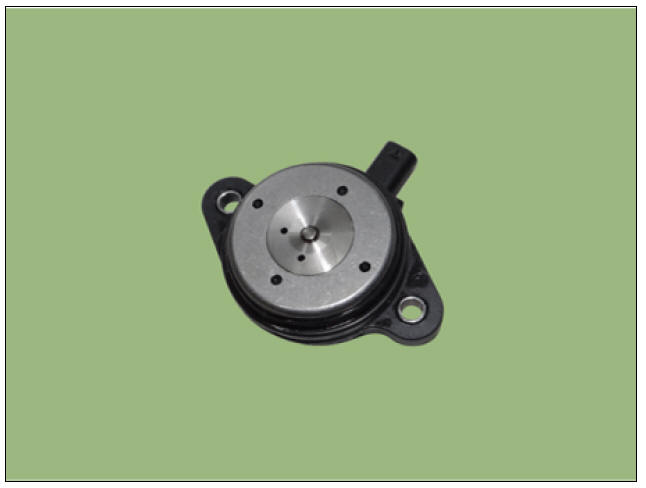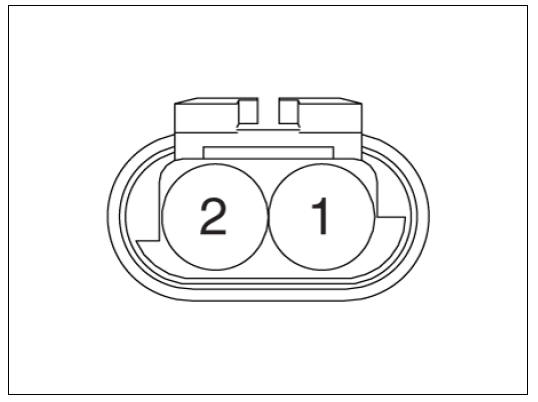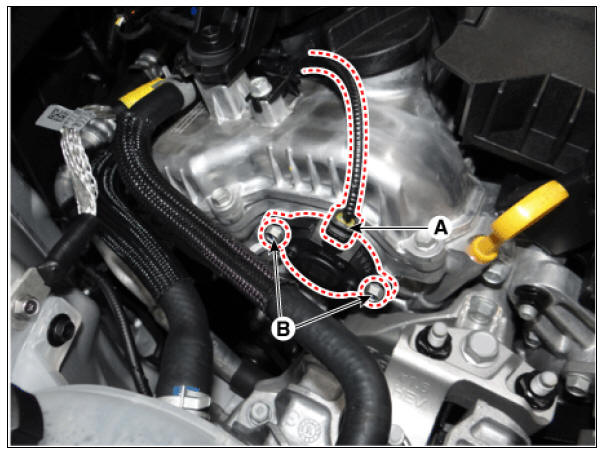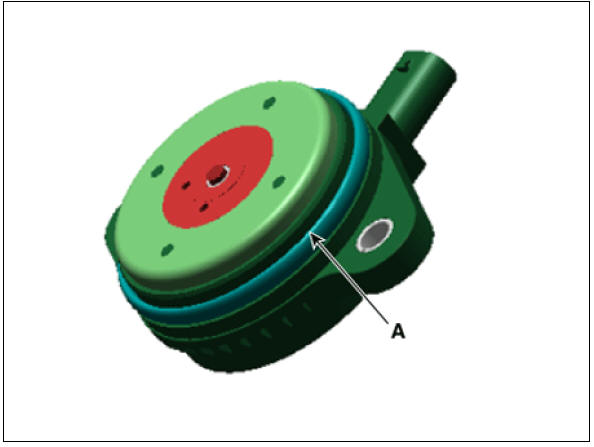KIA Niro: Variable Force Solenoid (VFS)
Description
Continuous Variable Valve Timing (CVVT) system advances or retards the valve
timing of the intake
and exhaust valve in accordance with the ECM control signal which is calculated
by the engine speed
and load.By controlling CVVT, the valve over-lap or under-lap occurs, which
makes better fuel
economy and reduces exhaust gases (NOx, HC) and improves engine performance
through reduction
of pumping loss, internal EGR effect, improvement of combustion stability,
improvement of
volumetric efficiency, and increase of expansion work.This system consist of the
Variable Force
Solenoid (VFS) which supplies the engine oil to the cam phaser or cuts the
engine oil from the cam
phaser in accordance with the ECM PWM (Pulse With Modulation) control signal,
the Cam Phaser
which varies the cam phase by using the hydraulic force of the engine
oil.Variable force solenoid
(VFS) (intake) changes its force depending on the PWM duty to control the stroke
of the CVVT oil
control valve (OCV) (intake) bolt. The delivered oil rotates the rotor connected
to the camshaft of the
cam pager and rotates the camshaft to the engine rotating direction (intake
advanced / exhaust
retarded) or the opposite direction (intake retarded / exhaust advanced) to
change the phase angle of
the cam.
Variable Force Solenoid (VFS) (Bank 1 / Intake)

Circuit Diagram

Harness Connector

Variable Force Solenoid (VFS) Repair procedures
Removal
- Turn ignition switch OFF and disconnect the battery negative (-) terminal
- Disconnect the VFS connector (A).
- Remove the mounting bolts (B), and then remove the VFS from the engine.
Variable force solenoid mounting bolt : 9.8 - 11.8 N*m (1.0 - 1.2 kgf*m, 7.2 - 8.7 lb*ft)

Installation
Warning
- Install the component to the specified torque.
- Note that internal damage may occur when the component is dropped. If the component has been dropped, inspect before installing
- Do not use any dropped variable force solenoid (VFS) valve.
- Note below cautions when installing variable force solenoid (VFS) valve.
1) After replacing the O-ring (A) of variable force solenoid (VFS)
valve, apply engine oil on new O-ring
(A). 
2) Push variable force solenoid (VFS) valve up to the timing chain cover, and temporarily tighten the bolt.
3) Tighten the variable force solenoid (VFS) valve to the specified torque.
- Install in the reverse order of removal.
READ NEXT:
 CVVT Oil Control Valve (OCV)
CVVT Oil Control Valve (OCV)
Specification
Bank 1 / Exhaust
Description
Continuous Variable Valve Timing (CVVT) system advances or retards the valve
timing of the intake
and exhaust valve in accordance with the ECM control signal which is calculated
by the engine spe
 Fuel Pressure Control Valve (FPCV)
Fuel Pressure Control Valve (FPCV)
Specification
Fuel Pressure Control Valve (FPCV) Description
Description
Installed on the high pressure fuel pump, the Fuel Pressure Control Valve
controls the flow of fuel into
the injectors in accordance with the ECM signal calculated ba
 Electric EGR Control Valve
Electric EGR Control Valve
Specification
Motor
Position sensor
Electric EGR Control Valve Description and operation
Description
The Electric EGR Control Valve is a solenoid valve installed between the EGR
cooler and the exhaust
line that controls the EGR (Exhaust
SEE MORE:
 ESP(Electronic Stability Program) System / Description And Operation
ESP(Electronic Stability Program) System / Description And Operation
ESP(Electronic Stability Program) System / Components And Components
Location
Pressure Source Unit (PSU)
Integrated Brake Actuation Unit (IBAU)
Front wheel speed sensor
Rear wheel speed sensor
Description
Electronic Stability Prog
 Parking Brake Cable Repair procedures
Parking Brake Cable Repair procedures
Removal
Turn ignition switch OFF and disconnect the negative (-) battery
terminal.
Remove the crash pad lower panel.
(Refer to Body - "Crash Pad")
Remove the knee air bag.
(Refer to Restraint - "Knee Airbag(KAB) Module&q
Categories
- Home
- KIA Niro EV, Hybrid - Second generation - (SG2) (2021-2024) - Owner's manual
- Kia Niro - First generation - (DE) (2017-2022) - Service and Repair Manual
- Contact Us
